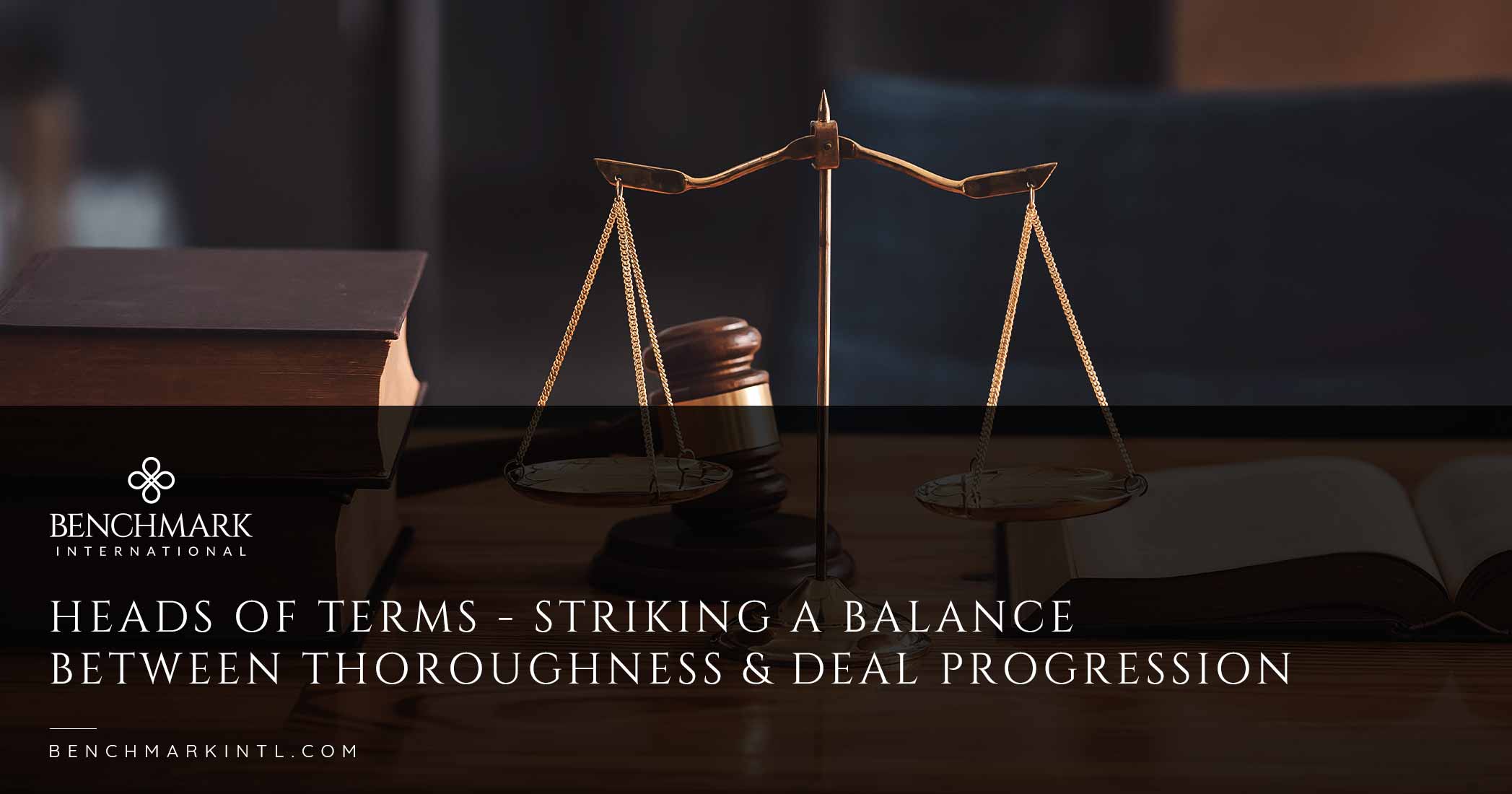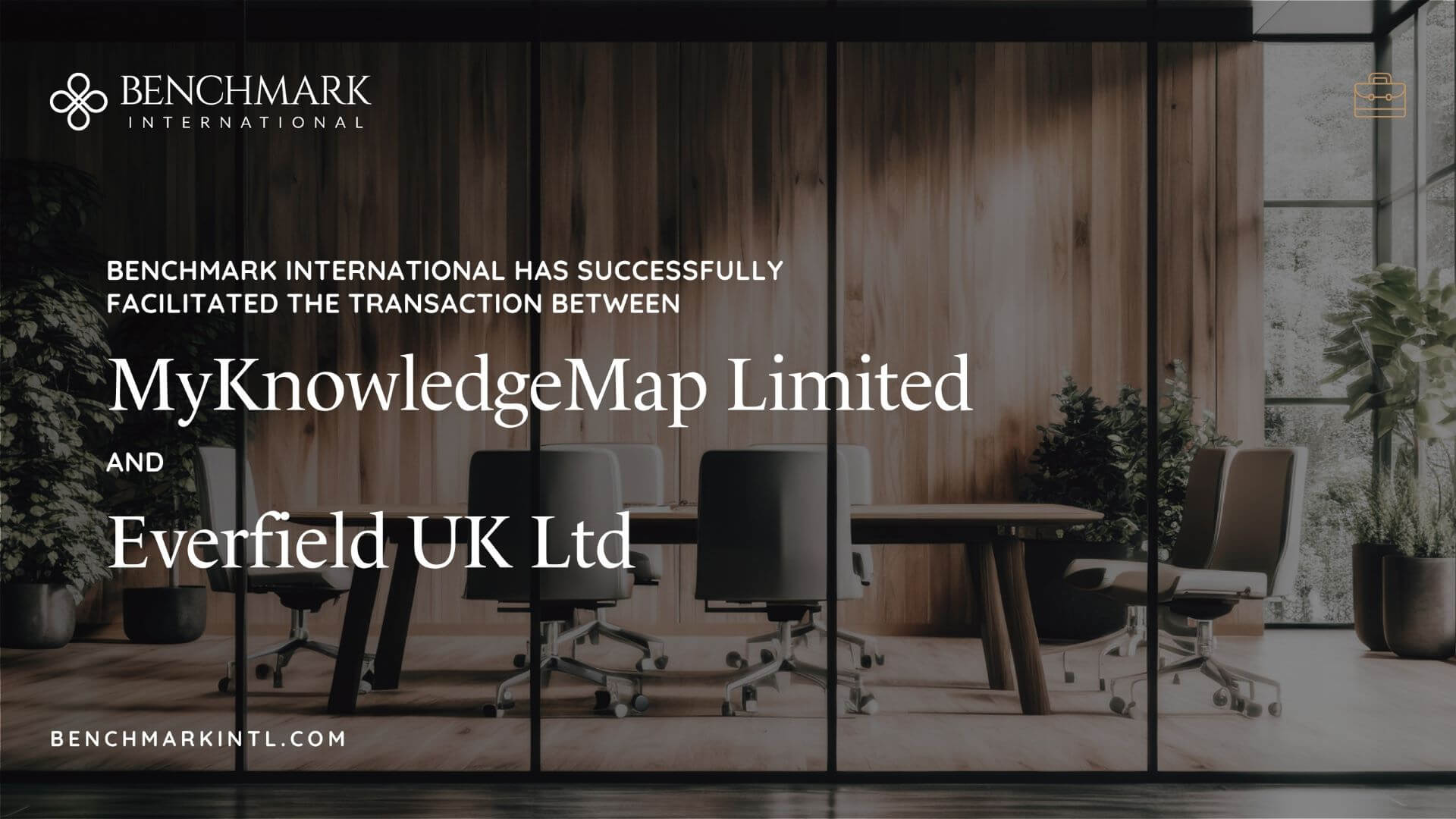
So, all the hard work has paid off and you have reached a major milestone in the process – receipt of the draft Heads of Terms (‘Heads’), also referred to as the Letter of Intent or simply the term sheet. For many, this will be the first document that has a real legal look about it, although much of the content will be specifically stated to be not legally binding.
Sam McNamee, director at Benchmark International’s Irish office, explains how the Heads are designed to fulfil two primary purposes. First, to set out the key ‘heads’ of the deal, so both buyer and seller know the deal they are looking to achieve through the due diligence and legal process, and secondly, to give the buyer a legally binding period of exclusivity to have a fair run at the deal.
Non-Legally Binding Contents
The non-legally binding content within the Heads is fairly standard across most deals:
- The purchase price – detailing the headline valuation and how this has been arrived at (normally a multiple of agreed or estimated earnings), any structure in the deal (such as deferred or contingent consideration, or even a retained or rollover shareholding), and any key hurdles attaching to any amounts of the purchase price that might be payable at future dates (an earn-out, for example).
- The treatment of surplus assets – includes Free Cash or a property sitting on the company’s balance sheet, which will not form part of the deal for the buyer. In the case of Free Cash, a key component will almost always be the agreement of a Net Working Capital target or ‘peg’ (see James Sloane’s article Extracting Balance Sheet Cash at Deal Closing for more information). Many Heads will fairly attempt to set out the intended mechanism for establishing this target, although it’s often best retaining some flexibility in order to have the best negotiating position down the line.
- The seller’s ongoing involvement in the business – such as the intended length of service, key remuneration details and non-compete clauses. Where remuneration levels have already been factored into the deal – through the adjustment of the earnings number underpinning the purchase price – these details will normally be added to the Heads. In the case of a deal involving a retained or rollover (into the buyer company) shareholding, these provisions are likely to be far more complex. As such, there will often be reference to key matters to be picked up down the line, such as ‘good leaver’ and ‘bad leaver’ provisions. Care needs to be taken here and lawyer input may be recommended, even though these terms are not legally binding.
- Tax – reference will often be made to the sellers being able to structure the deal in a ‘tax efficient manner’. Buyers will be accommodating at this stage, although any final structuring, (after formal tax advice where appropriate), will need to be at no cost to the buyer for this not to have an impact on the purchase price.
- Timeline – the Heads will normally set out the timeline for completion of the deal, and often key dates along this timeline, which will have a direct bearing on the exclusivity period agreed (see below).
- Some legal ‘pointers’ – it’s common to see reference to the deal being subject to ‘representations, warranties and indemnities normal to a deal of this size and nature’. In some cases, there may be more detail around this and, again, lawyer involvement would be recommended.
Legally Binding Contents
As a selling shareholder, you will be asked to sign and date the Heads, so it’s wise to be fully aware of the legally binding contents, which will normally include the following:
- Period of exclusivity – normally a period of three to four months will be granted to the buyer to allow them to complete any due diligence (financial, commercial and legal), and this will run hand in hand with a formal cost indemnity.
- Cost apportionment – it’s normal to state that each party will bear its own professional costs.
- Cost indemnity – fairness dictates that the buyer, having incurred costs in pursuing a deal after the signing of Heads, should be compensated where a seller withdraws from the deal, and this is a generally accepted principle on most deals. In a lot of cases, the drafting of these clauses will be non-contentious. In some cases, however, a cost indemnity may contain a myriad of legal wording and implications, and lawyer involvement is absolutely essential.
- Governing law – as with any legal agreement, the Heads will clearly state the legal jurisdiction in which any disputes would be dealt with. Overseas buyers will often suggest their own legal jurisdiction for the deal, although it’s normal to stick with the seller’s as all existing commercial agreements, which will be the subject of the legal due diligence, will be accordingly drafted. And seller’s lawyers prefer this too!
Common Questions
Q – How much detail should be in the Heads?
A – It depends, although popular advice to sellers is that ‘time and detail kill deals.’ Often, the best course of action is to agree the basics and get the deal progressing as soon as possible.
Q – Who prepares the Heads?
A – Typically, the buyer or their advisers. It’s normally clear when a buyer has used their lawyers to draft the Heads, in which case the sellers would be best advised to have the Heads reviewed by their own lawyer, in conjunction with their advisers, of course!
Q – What happens next?
A – After signing Heads, the next steps will be the agreement of a deal timeline, the circulation of an initial issues list, the issuing by the buyer of the financial and legal due diligence wish lists and the setting up of a virtual data room to accommodate all this.
Point of View
Getting the balance right between content level and deal direction will vary from deal to deal. Your transaction team here at Benchmark International is highly experienced in these matters and will work with you, and your chosen lawyers if appropriate, to get the deal moving as quickly as possible whilst ensuring areas for disagreement down the line are minimised.

Author
Sam McNamee
Director
Benchmark International
T: +353 (0) 21 206 3999
E: McNamee@Benchmarkintl.com
Europe: Michael Lawrie at +44 (0) 161 359 4400 / Lawrie@BenchmarkIntl.com
Americas: Sam Smoot at +1 (813) 898 2350 / Smoot@BenchmarkIntl.com
Africa: Anthony McCardle at +27 21 300 2055 / McCardle@BenchmarkIntl.com
ABOUT BENCHMARK INTERNATIONAL:
Benchmark International is a global M&A firm that provides business owners with creative, value-maximizing solutions for growing and exiting their businesses. Benchmark International has handled over $10 billion in transaction value across various industries from offices across the world. With decades of M&A experience, Benchmark International’s transaction teams have assisted business owners with achieving their objectives and ensuring the continued growth of their businesses. The firm has also been named the Investment Banking Firm of the Year by The M&A Advisor and the Global M&A Network as well as the #1 Sell-side Exclusive M&A Advisor in the World by Pitchbook’s Global League Tables.
 Benchmark International
Benchmark International  Benchmark International
Benchmark International 

.jpg?width=1200&height=1200&name=Lorna-heads-of-terms_Social%20(002).jpg)



